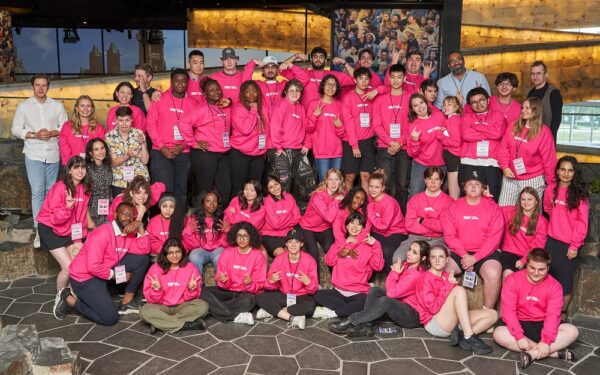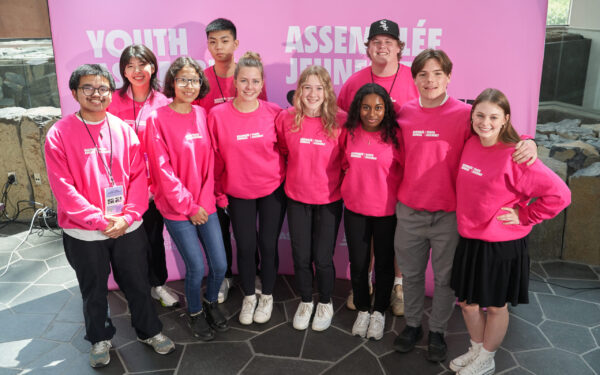Access to reliable internet is a lifeline—especially for rural and First Nations communities where connectivity is scarce. However, funding for internet infrastructure upgrades in Canada hasn’t caught up to the demand. When internet is slow, staggered or non-existent, communities—and the vital businesses and institutions that operate within them—lose connection to critical resources, opportunities and the rest of the world. Receiving a grant from CIRA can create opportunities for these community pillars to grow and thrive locally and beyond.
We caught up with three of this year’s grant recipients to learn more about the impact a CIRA Community Investment Program Grant will have on access to business development and other opportunities in their First Nations communities.
Takla taking steps towards full connectivity
Takla Lake Nation (TN) is a First Nation located around Takla Lake, 400 km north of Prince George, British Columbia. The main community is at Takla Landing, on the north end of Takla Lake – at the very end of the one road into town. The 250 residents of Takla Landing have a hard time connecting to the rest of the world. Whether it’s because of BC Hydro power outages, servers crashing, repeater stations going offline, their internet access is intermittent at best and costs to bring fiber internet to the community have been out of reach.
“Right now our schools suffer. We can’t run big screens and streaming like other schools. The most we can manage is emails and sending photos. We all know we should have the same essential services as everybody else, like virtual schooling and online healthcare,” said Scott Hickling, General Manager.
Over the last two years, the Nation has been engaged in conversations with the province and regional districts about upgrading internet access. Hickling says the province understands last mile is a huge issue in BC, and as a first step, directed TN management to apply for a CIRA grant for connectivity upgrades.
“We almost fell down when we got the news CIRA was funding us. It means people finally recognized that we really are here at the end of the road and we’re of value. We’ll be able to upgrade across the community to prepare for what’s next, whether that’s fibre or satellite. This grant is going to give us that last bit of connectivity we haven’t had. We’ll be upgrading older equipment to newer technology giving us more reliability and stability.”
And with improved connectivity comes greater economic opportunity. Takla territory is a rich ecosystem and Takla’s tourism department is equipped with a hotel, restaurant and gas bar, and will now be able to maximize on its guide outfitting and tripping specialty. “Better internet means Takla can become that landing spot for entering the territory and the Narrows down the lake.”

Hickling is also excited for the community development opportunities that will come from training people in community to take control of their own connectivity, and from the cable and business operations that come with the upgrades.
Laying the foundation for Leq’á:mel First Nation (LFN) owned businesses
In Leq’á:mel First Nation (LFN), located 22 kilometres east of Mission, B.C., a snapshot of connectivity illustrates inconsistent peaks and valleys in service. While most people in Canada who shifted to working from home during the pandemic may have dealt with a dropped video call here and there, the state of the internet in Leq’á:mel First Nation was much more dire.
“Up to now, we’ve had extremely spotty internet service—so much so, that there are days where I just have to ask staff to go home. All of which negatively impacts business development and operation in the Nation,” said Ron Smith, CEO of the Leq’á:mel Development Corporation, the community organization that helps to establish business opportunities for Leq’á:mel entrepreneurs.
LFN-owned businesses were hard pressed in terms of day-to-day operations, let alone opportunities for development. Business relationships that required continuous connection suffered due to the community’s struggling connectivity, leading some workers to risk in-person meetings during the pandemic or even to leave the Nation altogether.

Not only was connectivity an issue for LFN, but audits found the Nation’s networks to be insecure and easily penetrable. With ransomware attacks on the rise, it was important for the Leq’á:mel Development Corporation to find a solution that not only helped their community connect, but also kept their data safe.
“We’re going to revamp the network infrastructure,” said Keith Hayes, Chief Executive officer at Troika Technologies, the business supporting LFN’s upgrades. “We’ll get technology that eliminates ransomware attacks and bad actors coming into the businesses.”
A CIRA grant will fund improved internet infrastructure, stability, and security for Leq’á:mel First Nation, opening the door for LFN-owned businesses to thrive and for increased employment opportunities in the Nation. As a result, Smith is hopeful this will bring community members that might have left the Nation back home.
“The Development Corporation has made a commitment to the businesses here that we will work to create a climate that is conducive to business growth, long-term, sustainable employment at home in the Nation—and the return of members to the reserve.”
CIRA grant helps unlock growth in Malahat Nation
Malahat Nation, located on Vancouver Island, applied for a CIRA grant to bring its community up to speed and build digital literacy skills for low-income Indigenous households and students. The Nation has long been working to build out its own infrastructure and minimize reliance on third-party companies—which are often unaffordable for local businesses and members.
Dan Pasmans, Technologies and Communications Coordinator for Malahat Nation, says their project is all about unlocking opportunities, economic and otherwise, for the Nation.
“As our data needs as a Nation have been increasing exponentially, we’ve been experiencing a lot of bottlenecks with our service—instead of continuing to rely on these external companies, we want to build this ability in-house to maintain our own infrastructure. And CIRA’s Community Investment Program has offered us this opportunity to get this project off the ground.”
Malahat Nation plans to use some of its funding to cover hardware costs including building a server on its land. External network connections to this server will then be provided to the Nation’s members for free—starting with low-income members, with expansion to households across the entire Nation in the future. Building it on their own land will enable affordable and predictable pricing that can be managed by the Nation itself.

What else does a CIRA grant mean for the future of Malahat Nation? The CIRA grant will help to unlock growth opportunities with data requirements beyond the current capacity. This includes plans for a business park and other development opportunities, as well as the capacity to monitor ecosystems and environmental health in the Nation, in order to support evidence-based decision making and advocate for long-term sustainability.
Takla Nation, Leq’á:mel First Nation and Malahat First Nation are hardly the only communities experiencing this. In fact, only a third of First Nation reserves and half of rural households in Canada have access to the “basic” speed target of 50 megabits per second (Mbps) download. We know that funding to improve Canada’s internet is scarce, which is why we at CIRA invest over $1 million each year in community-led projects that help strengthen our internet ecosystem through our Community Investment Program Grants. We are proud to support our grant recipients and we look forward to seeing the development and growth that a CIRA grant will help bring to these communities.
Last month we announced the recipients of this year’s $1.25 million Community Investment Program Grants initiative, highlighting a number of projects designed to improve connectivity in communities that are lagging behind when it comes to the internet—with a particular focus on Indigenous communities. To date, CIRA has funded over 200 digital equity initiatives to date. Visit our announcement for a full list of 2022’s grant recipients.
Maureen James manages CIRA’s Community Investment Program. Her background is in fundraising, grantmaking and strategy development with non-profits internationally and here in Canada.





